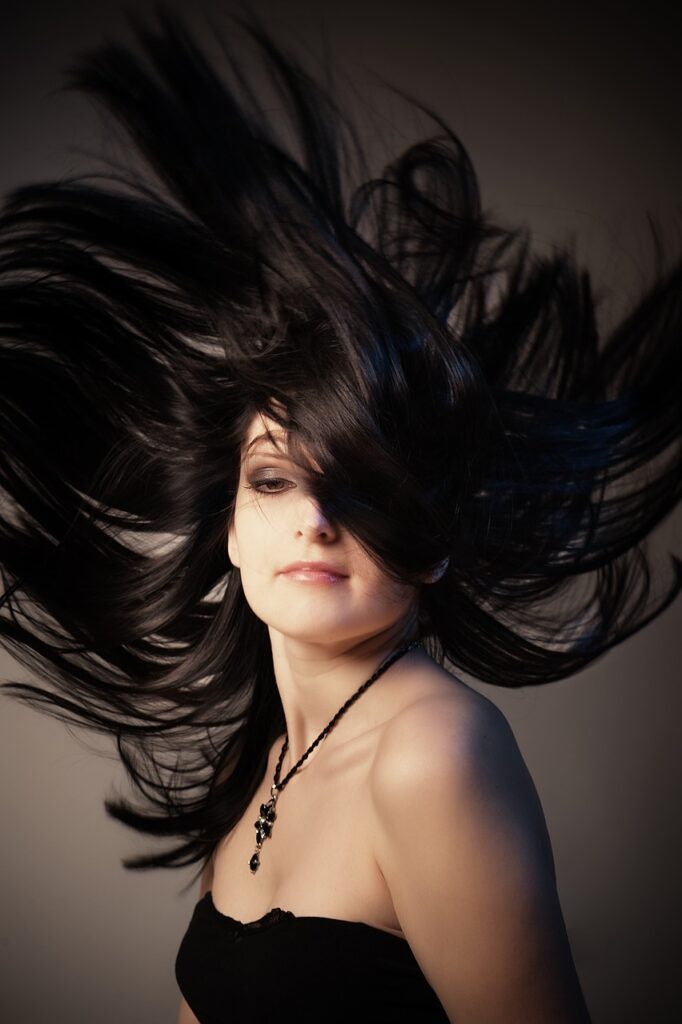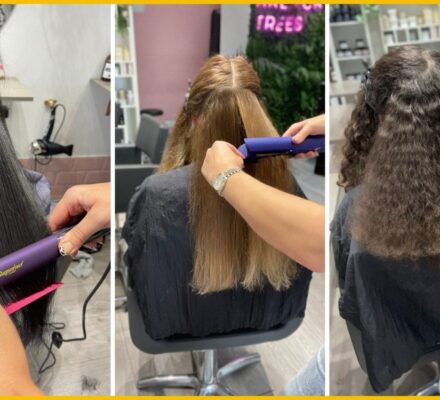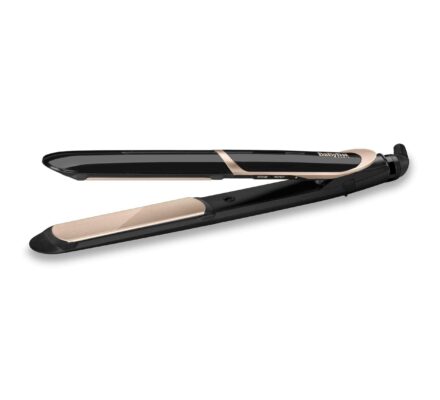Have you ever found yourself confused about the differences between a hair straightener and a flat iron while shopping for your favorite beauty tools? You’re not alone! In the article “What Is The Difference Between A Hair Straightener And A Flat Iron?” you’ll discover the unique features and uses of these two popular hair styling gadgets. By diving into the nuances, the article aims to clear up any confusion, making it easier for you to choose the best tool for achieving your desired look. Have you ever stared at the beauty aisle, paralyzed by the overwhelming number of hair tools? If you’re like many people, you’re probably wondering, “What is the difference between a hair straightener and a flat iron?” While they might appear similar, these tools have their unique traits and uses. In this article, we will break down the key differences and help you understand which tool is better for your hair styling needs.
Understanding the Basics
Let’s start with the basics: both hair straighteners and flat irons serve the primary function of straightening hair, but their construction, functionality, and performance can differ.
What is a Hair Straightener?
A hair straightener is a general term for any device designed to straighten hair. It encompasses a variety of tools, including flat irons, but is not limited to them. Hair straighteners can also include brushes, combs, and other devices that aim to make your hair sleek and smooth. These tools use different technologies like heat, chemicals, or even steam to achieve the desired effect.
What is a Flat Iron?
A flat iron is a specific type of hair straightener. It consists of two plates that heat up and press together to straighten the hair. The plates are usually made from materials like ceramic, titanium, or tourmaline. Flat irons are highly effective because they use direct heat to smooth out the hair’s natural structure.
Materials Matter
The material of the plates plays a significant role in the performance of both hair straighteners and flat irons. Different materials offer various benefits and drawbacks. Here are some of the most common materials used:
| Material | Benefits | Drawbacks |
|---|---|---|
| Ceramic | Even heat distribution, gentle on hair, reduces frizz | Can crack easily, may take longer to heat up |
| Titanium | Fast heating, durable, maintains high temperatures | Can be harsh on delicate hair, expensive |
| Tourmaline | Produces negative ions, reduces frizz, adds shine | More expensive, not as durable as titanium |
Ceramic
Ceramic plates are popular because they provide even heat distribution and are gentle on your hair. They help to reduce frizz and create a smooth, shiny finish. However, ceramic plates can crack if dropped and may take longer to heat up compared to other materials.
Titanium
titanium plates heat up quickly and can maintain high temperatures, making them a durable and efficient choice. They are perfect for thick, coarse hair but can be too harsh for delicate hair types. Additionally, titanium flat irons tend to be more expensive.
Tourmaline
Tourmaline plates produce negative ions that help to reduce frizz and add shine, making them a great option for achieving a sleek look. However, these plates are more expensive and not as durable as titanium.

Heating Technology
The way a hair tool heats up can drastically affect its performance. Understanding different heating technologies can help you choose the best tool for your needs.
Ceramic Heating
Ceramic heating provides consistent, even heat, reducing the risk of hot spots that can damage your hair. This technology is commonly found in both hair straighteners and flat irons.
Infrared Heating
Infrared heating penetrates the hair shaft, heating hair from the inside out. This technology is gentle, reduces frizz, and locks in moisture, making it an excellent choice for those with dry or damaged hair.
Ionic Heating
Ionic heating technology emits negative ions that break down water molecules, allowing the hair to dry faster while reducing frizz and static. This is particularly beneficial for those with fine or thin hair.
Performance Comparison
Each tool has its strengths and weaknesses depending on your hair type and desired style. Let’s break down the performance of hair straighteners and flat irons to get a clearer picture.
| Feature | Hair Straightener | Flat Iron |
|---|---|---|
| Versatility | Can include brushes, combs, steamers | Limited to two heated plates |
| Ease of Use | Varies by type | Generally straightforward |
| Effectiveness | Varies, some can be less effective | Highly effective, direct heat application |
| Temperature Control | May offer limited settings | Typically offers adjustable heat settings |
| Damage Risk | Varies by technology | Higher if not used properly due to direct heat |
| Suitable Hair Types | All, depending on the type of straightener | Best for thick, wavy, or curly hair |
Versatility
Hair straighteners offer more versatility since they include a range of tools, from combs and brushes to steamers. Flat irons, on the other hand, are limited to their two heated plates.
Ease of Use
The ease of use can vary significantly among hair straighteners. Brushes and combs can be more complex to use effectively. Flat irons are generally straightforward, making them a popular choice for quick styling.
Effectiveness
The effectiveness of hair straighteners varies based on the type and technology used. Flat irons are highly effective due to their direct heat application, making them ideal for achieving a straight, sleek look.
Temperature Control
Flat irons typically offer adjustable heat settings, allowing you to choose the best temperature for your hair type. Some hair straighteners may have limited temperature settings, reducing their effectiveness for certain hair types.
Damage Risk
The risk of damaging your hair varies depending on the technology and type of tool. Flat irons carry a higher risk of damage due to direct heat if not used properly. However, advanced technologies like ceramic or tourmaline can help mitigate these risks.
Suitable Hair Types
Different hair types may benefit more from one tool over another. Hair straighteners can be suitable for all hair types, depending on the specific tool. Flat irons are especially effective for thick, wavy, or curly hair due to their powerful and direct heat.

Special Features to Consider
When shopping for a hair straightener or flat iron, several special features can enhance your styling experience. Here are some key elements to look out for:
Automatic Shut-off
Safety should always be a priority. Look for tools with an automatic shut-off feature to prevent overheating and reduce the risk of accidents.
Variable Temperature Controls
Having the ability to adjust the temperature allows you to customize the heat setting to your specific hair type, reducing the risk of damage.
Swivel Cords
A swivel cord makes it easier to maneuver the tool without tangling the cord, providing a more seamless styling experience.
Dual Voltage
If you travel frequently, consider a tool with dual voltage compatibility so you can use it internationally without any issues.
Steam Functionality
Some advanced hair straighteners include a steam function that adds moisture to your hair during the styling process, reducing the risk of heat damage.
Choosing the Right Tool for Your Hair Type
Selecting the right tool can be overwhelming, but understanding your hair type can help narrow down your choices.
Fine or Thin Hair
For fine or thin hair, opt for tools with adjustable temperature controls and technologies that add moisture, like infrared or steam-based straighteners. Avoid high heat settings to minimize damage.
Thick or Coarse Hair
If your hair is thick or coarse, a high-powered flat iron with titanium plates can provide the necessary heat for effective straightening. Look for tools with higher temperature settings and durable construction.
Curly or Wavy Hair
Curly or wavy hair often requires more heat to achieve a smooth, straight look. Flat irons with ceramic or tourmaline plates are ideal, as they provide even heat distribution while reducing frizz.
Damaged or Colored Hair
For damaged or colored hair, choose tools with gentle technologies, such as ceramic heating or steam-based straighteners. Avoid extreme heat and look for features that help retain moisture.

Tips for Using Hair Straighteners and Flat Irons
Regardless of the tool you choose, following best practices can help you achieve the best results while minimizing the risk of damage.
Prep Your Hair
Always start with clean, dry hair. Use a heat-protectant spray to shield your hair from potential damage.
Section Your Hair
Divide your hair into small, manageable sections to ensure even heat distribution and thorough straightening.
Adjust the Temperature
Set the temperature according to your hair type. Lower settings are best for fine or damaged hair, while higher settings may be necessary for thick or coarse hair.
Keep It Moving
Avoid holding the tool in one spot for too long. Glide it smoothly through your hair to prevent heat spots and damage.
Cool Down
Allow your hair to cool down before touching or styling it further. This helps to set the straightened look and maintain its shine and smoothness.
Maintenance and Care
Proper maintenance of your hair straighteners and flat irons can prolong their lifespan and performance.
Regular Cleaning
Wipe down the plates after each use to remove any product buildup or residue that may affect their performance.
Storage
Store your tools in a cool, dry place. Avoid winding the cord tightly around the tool, as this can damage the cord over time.
Inspection
Regularly inspect your tools for any signs of damage, such as cracks or exposed wires. Replace them if necessary to ensure safety and effectiveness.
Conclusion
When it comes to choosing between a hair straightener and a flat iron, understanding the differences and your specific needs is key. Both tools have their unique features and benefits, making it essential to consider various factors such as hair type, desired style, and additional features. Whether you opt for the versatility of a hair straightener or the straightforward effectiveness of a flat iron, your choice can significantly impact your styling results and overall hair health.
So next time you find yourself in the beauty aisle, you’ll know exactly what to look for and how to select the best tool for your hair. Happy styling!



